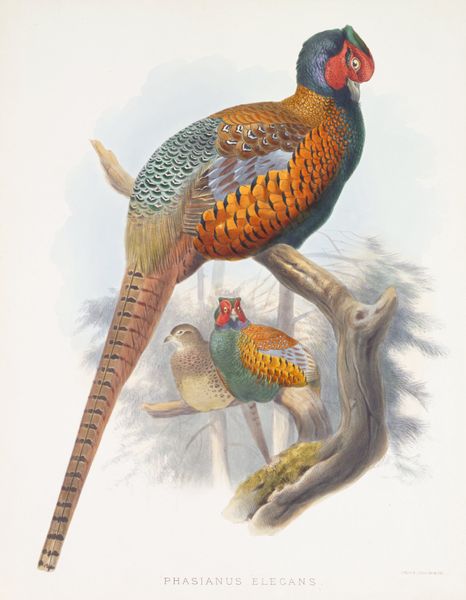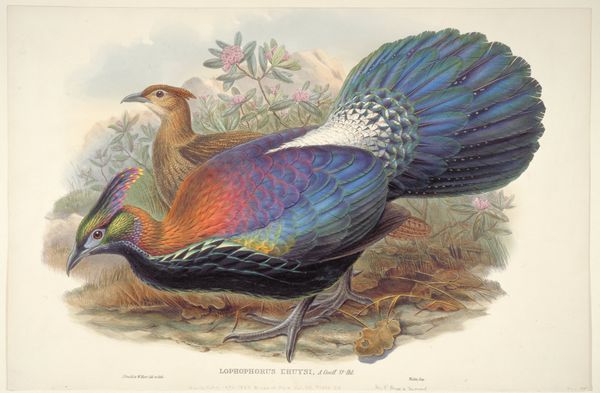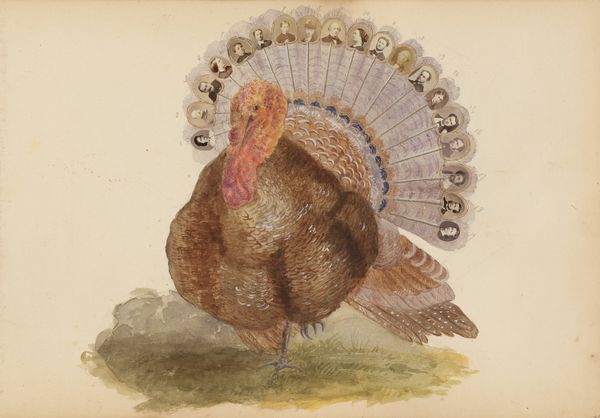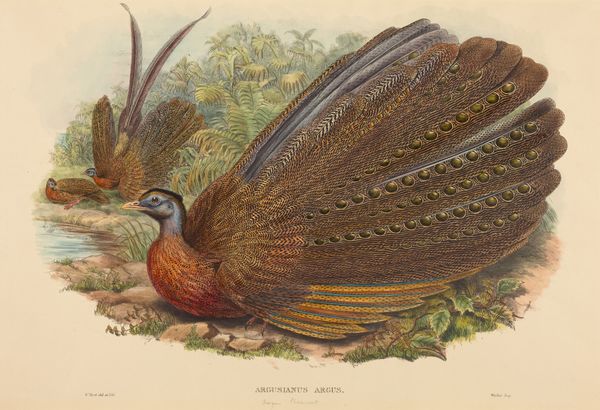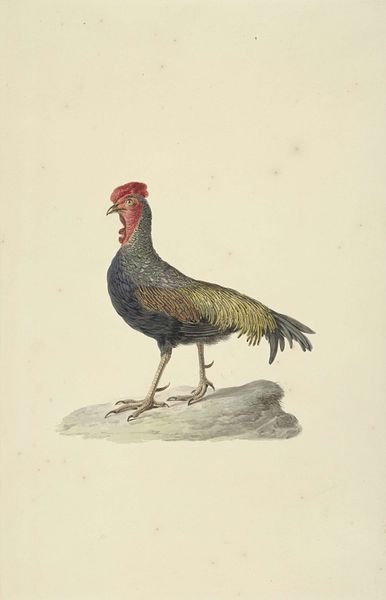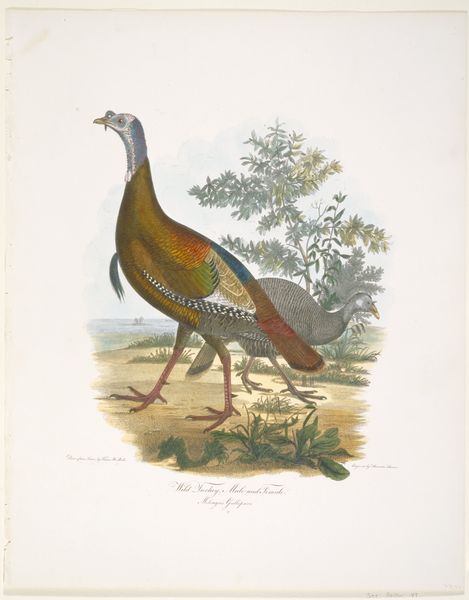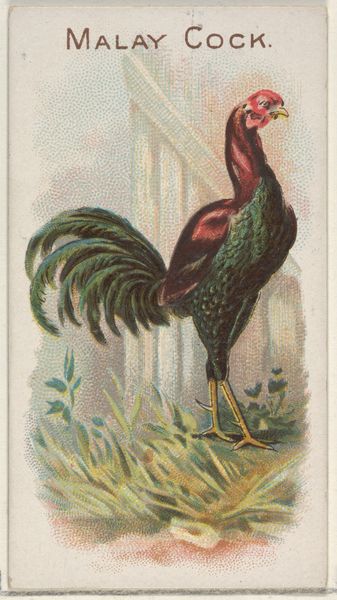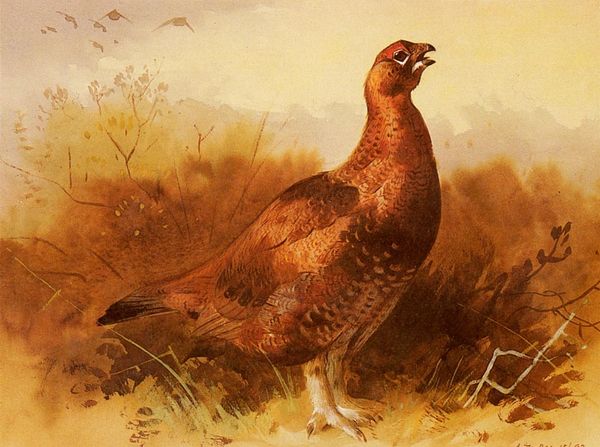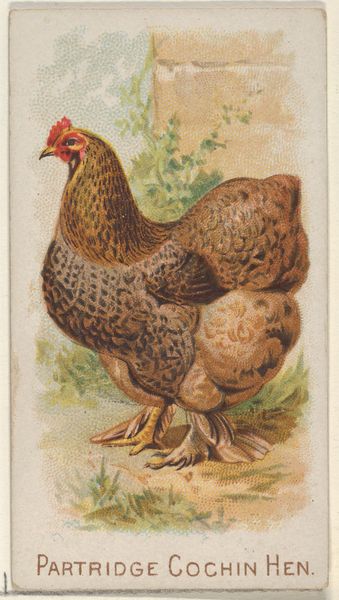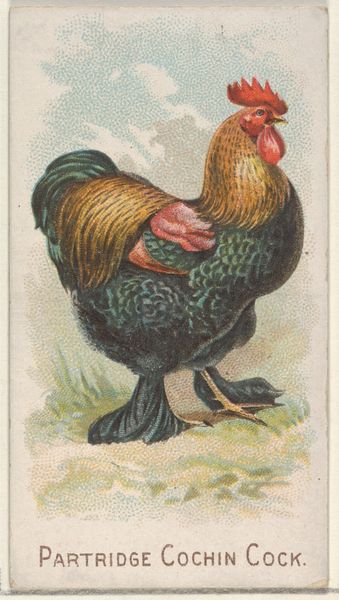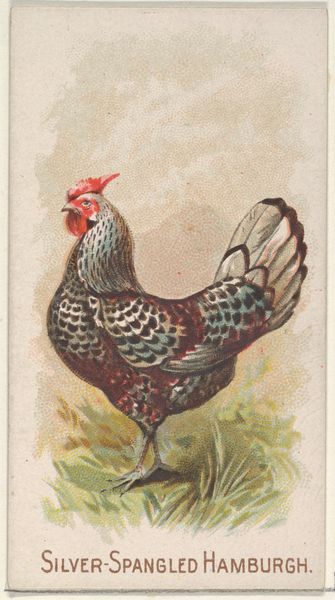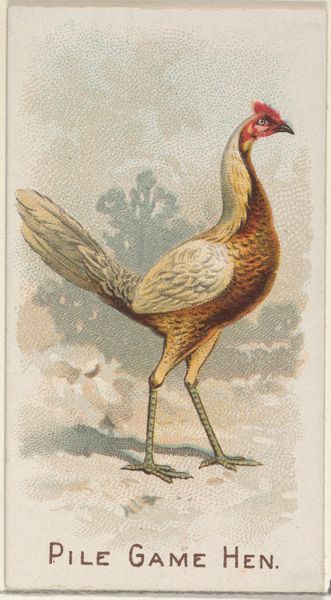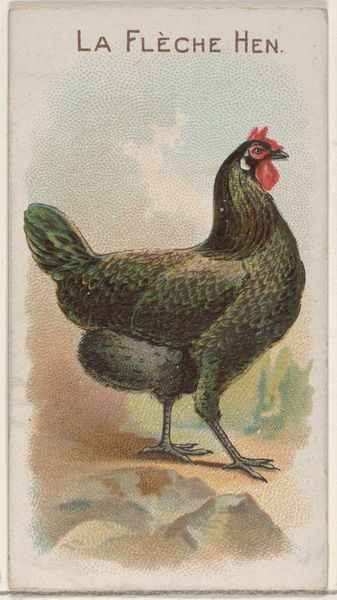
painting, watercolor
#
portrait
#
painting
#
bird
#
watercolor
#
watercolour illustration
#
realism
Copyright: Public domain
Curator: Oh, isn't that something! I mean, I've seen turkeys, obviously, but there's a certain...gravitas, I guess? that's just pouring off this piece. Editor: Absolutely. We're looking at Plate 1, "Wild Turkey," by John James Audubon. The artist’s name has become synonymous with a kind of exacting portrayal of avian life. And while the date is unknown, its historical implications are palpable. This watercolour on paper presents so much more than just a bird. Curator: More like an imperial eagle—this fellow is puffed up like he owns the forest. The colours are fantastic, too. You’ve got these rich browns and blacks playing off those white and gray patterns… feels almost theatrical, in a strange way. Does this piece suggest something about nature and spectacle? Or, the relationship between nature, display and male virility? Editor: In the context of Audubon's work, we can consider the complexities of representing the American landscape, its impact on different communities, and how this image of the wild turkey intersects with colonial narratives and the exploitation of natural resources. Curator: Heavy stuff for a turkey! But okay, yeah, the scale is impressive too. Makes me wonder how people at the time would have reacted to such a huge, life-sized bird on paper. What power dynamic emerges as the native animals become a source for artistic or scientific investigation? Editor: Indeed. Scale becomes critical here when discussing accessibility to natural resources and potential symbolic connections of a specific species to a certain people. I would encourage our listeners to take notice of these colonial gestures to both deconstruct nature and categorize indigenous identities. Curator: Hmm. You’ve certainly given me a lot to chew on. Seeing this painting in that light, it suddenly feels less majestic, and a lot more… loaded. Editor: Perhaps we can recognize the ways in which an image like this becomes intertwined with complex histories and power relations, rather than just appreciating its aesthetic qualities on the surface level. The artist is asking his contemporary audience and all viewers now, to bear witness. Curator: I suppose there's an uninvited, unintended invitation for the viewers of our present moment to join in deconstructing those historic perspectives that are still alive today. Food for thought for everyone. Editor: Absolutely. Now that you've thought about the deeper contexts of the artwork, our next piece presents...
Comments
No comments
Be the first to comment and join the conversation on the ultimate creative platform.
